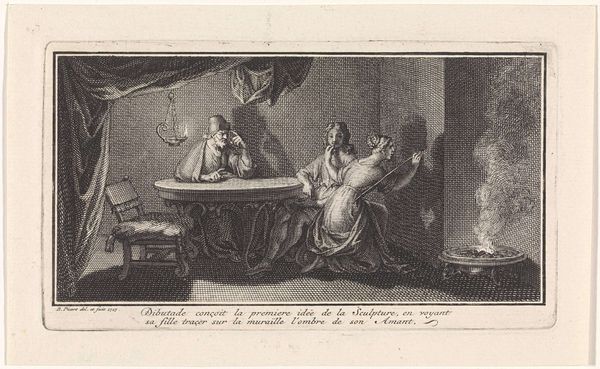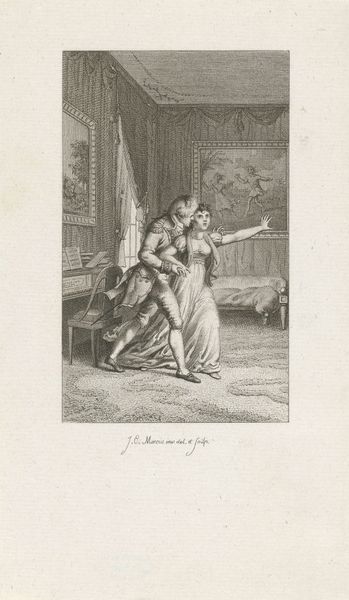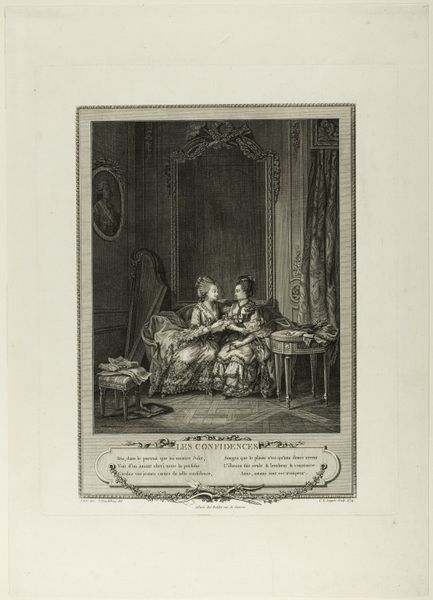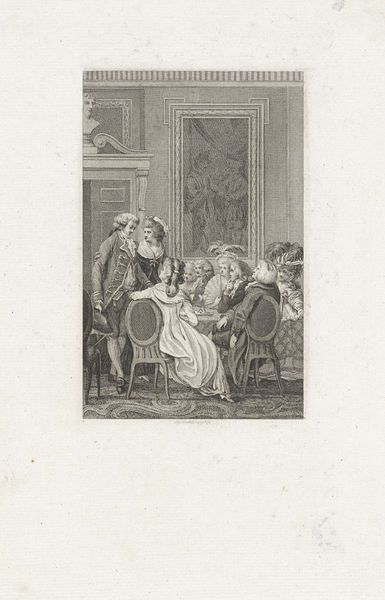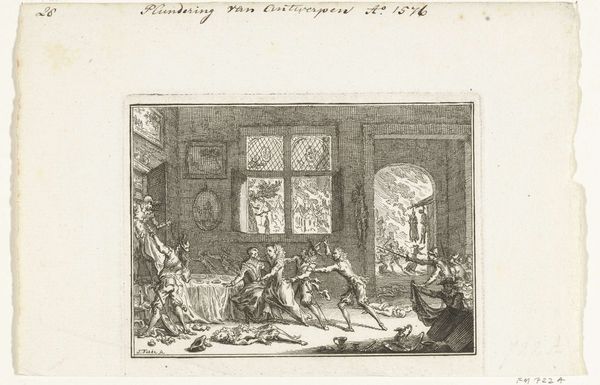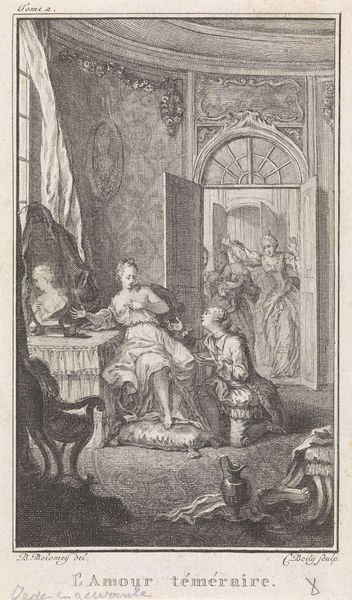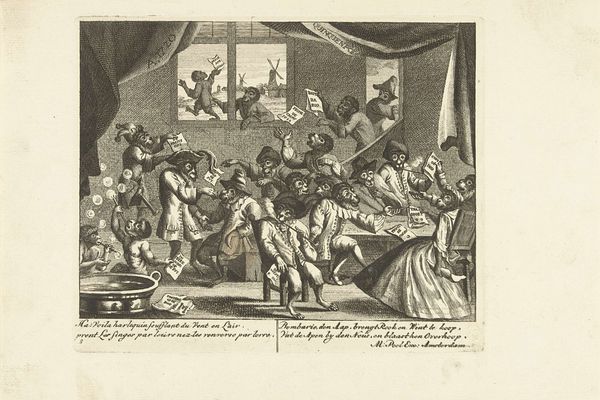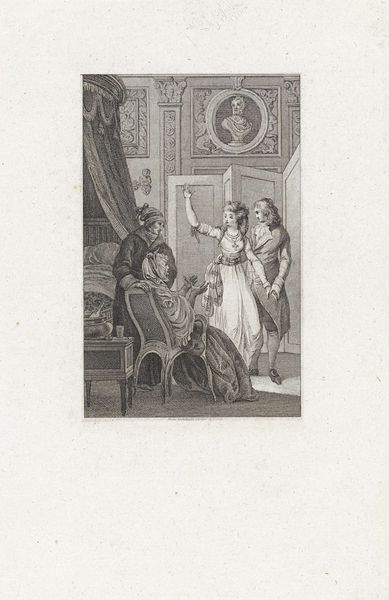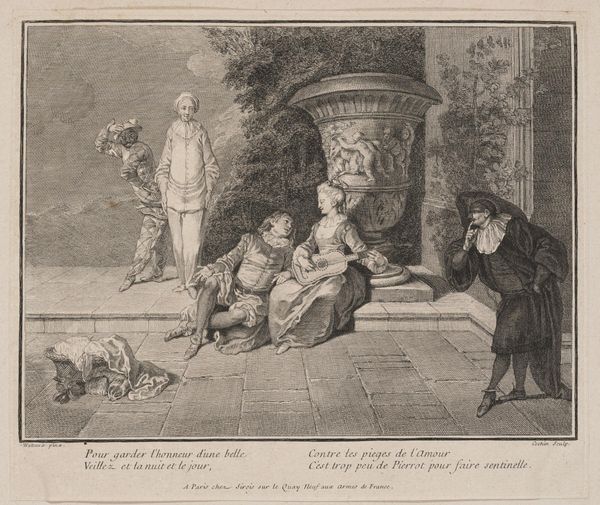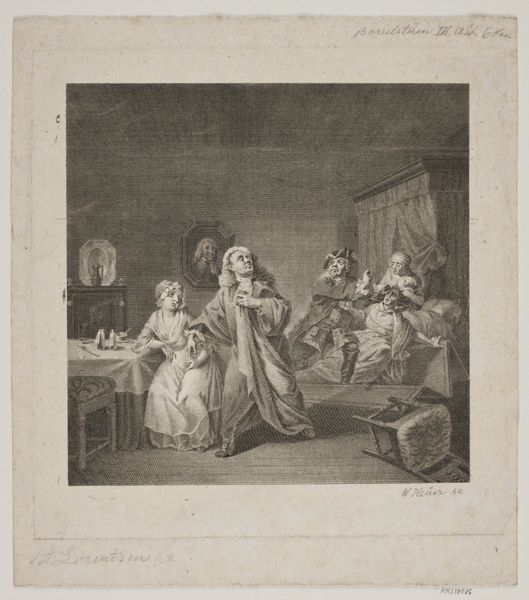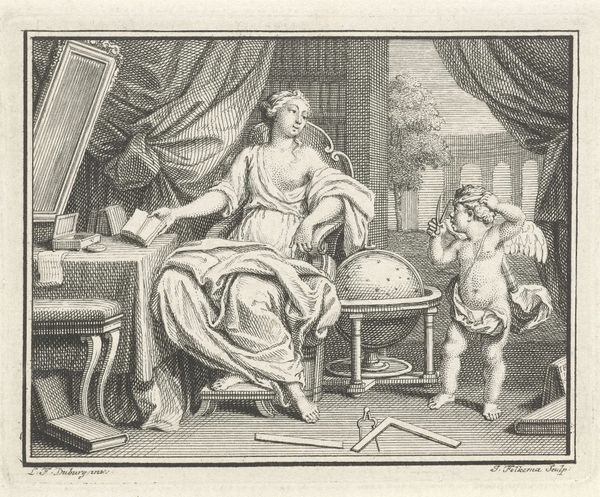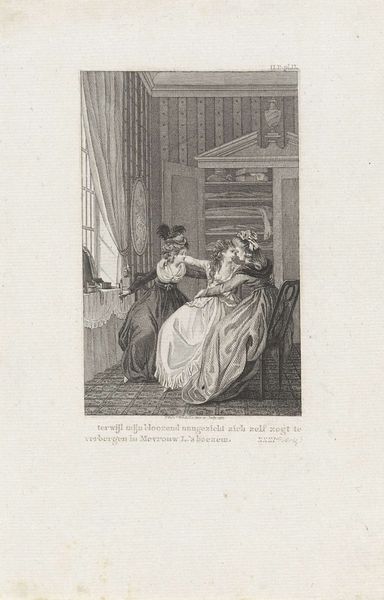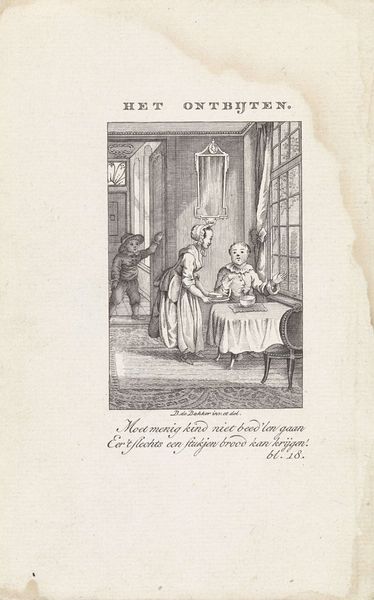
tempera, print, intaglio, engraving
portrait
fairy-painting
allegory
narrative-art
baroque
tempera
intaglio
old engraving style
line
history-painting
engraving
rococo
Dimensions: height 77 mm, width 133 mm
Copyright: Rijks Museum: Open Domain
Curator: Let’s turn our attention to this engraving by Bernard Picart, created in 1728. It’s titled “A Writer Receives Inspiration from Cupid and a Muse,” and it’s held here at the Rijksmuseum. Editor: My initial feeling is one of opulent languor. There's this very comfortable, almost decadent scene unfolding, brimming with allegorical figures and symbolic flourishes. It evokes ideas of both creative inspiration, yes, but also privilege. Curator: Absolutely. Picart was very active in the publishing world, and this image gives us a sense of the intellectual climate of the time. What do you notice about the role of Cupid and the Muse? Editor: Well, Cupid's offering a laurel wreath, a symbol of victory and accomplishment, to the writer, while the Muse seems to be whispering into his ear, directly inspiring his writing. But I am interested to understand how such allegory can legitimize male genius? Curator: It’s definitely an idealized vision of artistic creation, but it reinforces social expectations too. Picart often incorporated imagery intended to underscore particular morals. So there’s the historical context – but also the intended didactic function. Do you notice the composition elements that stand out? Editor: Definitely the clear contrast between the active figures inspiring the writer and the more subdued setting, also notice, there's someone asleep, cloaked by shadows. It draws the eye right to the writer's moment of divine inspiration, or at least that's what the artist seems to believe, and is the writer even that interested in working or creating something relevant and useful to a struggling society? This image becomes another elitist, classic vision of white male creativity as divinely touched. Curator: Right, and we must note who were the audience of Picart, which publishing networks were profiting from and shaping these kinds of images. It’s important to remember this wasn't just aesthetic expression; these images helped cement social norms and hierarchies. Editor: It’s a beautiful image, undeniably, but by acknowledging its place within a power structure, we can consider our responsibility in engaging with historical artwork. The questions we should bring forward now. Curator: A good way to conclude as it leaves one thinking about the nature of inspiration.
Comments
No comments
Be the first to comment and join the conversation on the ultimate creative platform.
